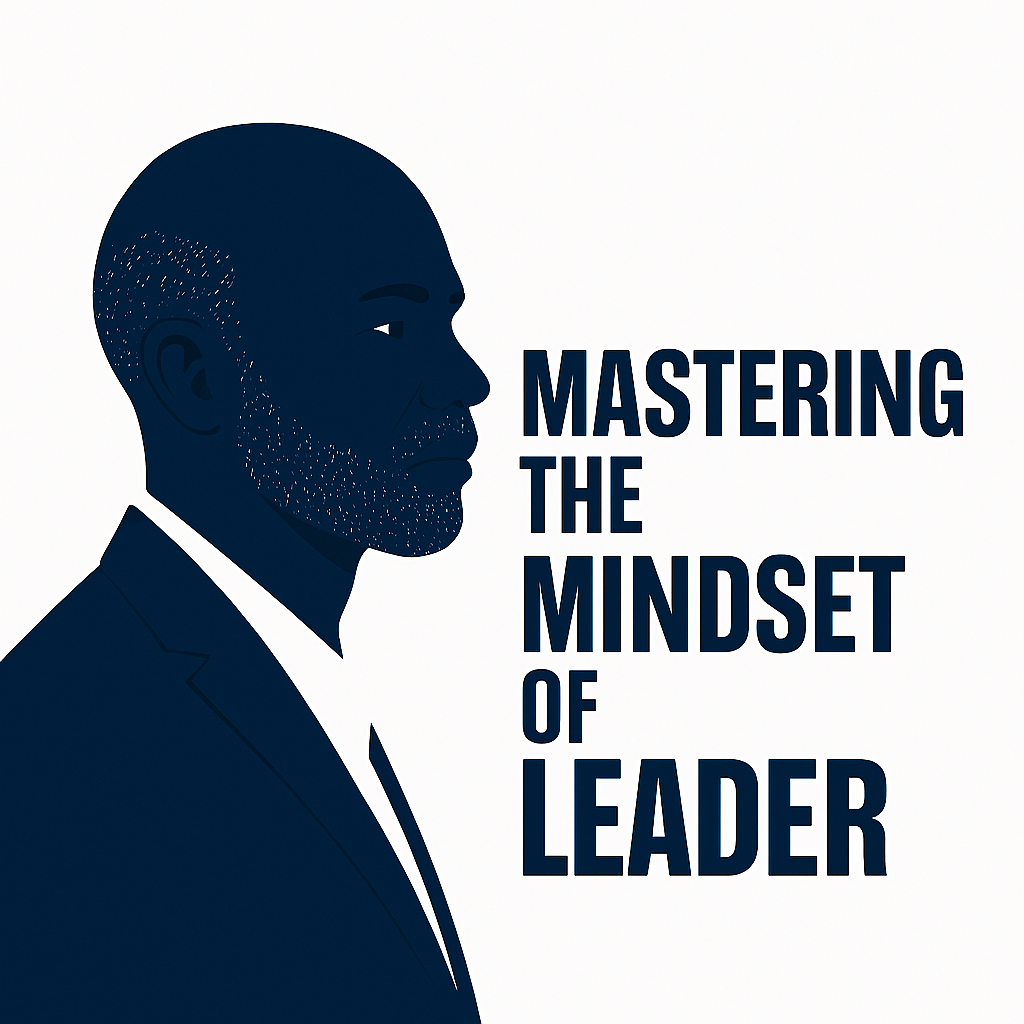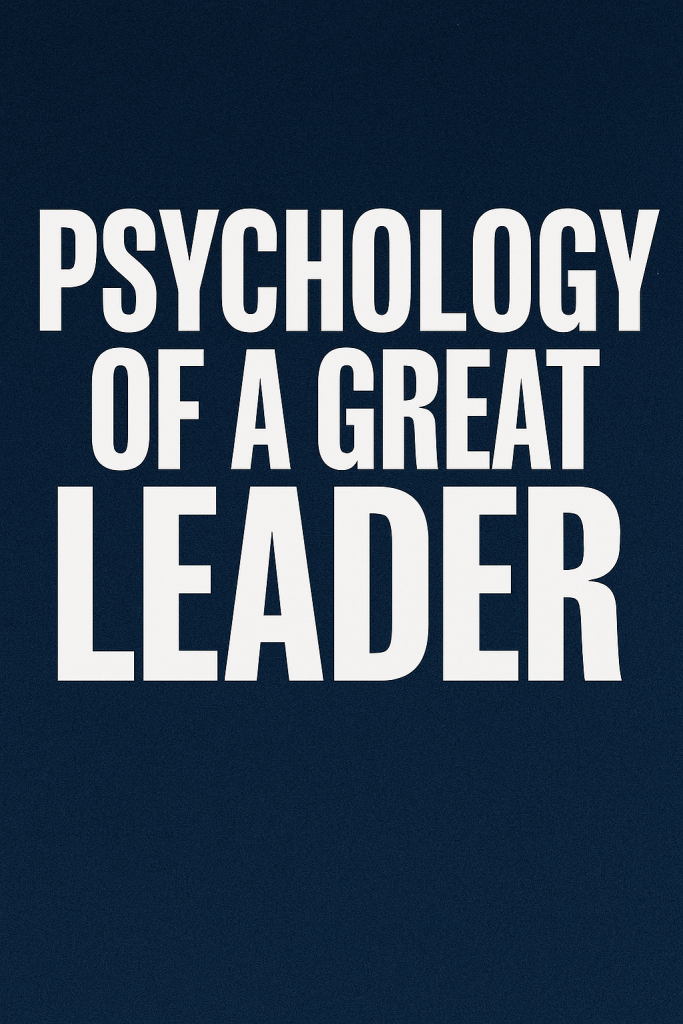
Strong Manager Power Psychology
Understanding The Inner Architecture Of Influence
Great Leader Or Strong Manager
Leadership is not merely a role or title or Great Leader Or Strong Manager—it is a psychological construct shaped by behavior, cognition, and emotional resonance. Great leaders operate from a foundation of self-awareness, empathy, and strategic foresight. Their decisions are not reactive but rooted in a deep understanding of human motivation and group dynamics. The psychology of leadership involves mastering both internal regulation and external influence. Leaders must balance assertiveness with humility, vision with adaptability, and authority with compassion. These traits are not innate but cultivated through reflection, feedback, and intentional growth. A leader’s mindset determines how they respond to uncertainty, conflict, and opportunity. Psychological resilience allows them to navigate setbacks without losing clarity or purpose. Ultimately, the psychology of a great leader is a dynamic interplay between personal mastery and collective empowerment.
Emotional Intelligence And Leadership Impact
Building Trust Through Emotional Awareness
Navigating Teams With Empathetic Precision
Emotional intelligence is the cornerstone of effective leadership. Leaders who understand and manage their emotions can better connect with others and foster trust. This involves recognizing emotional cues, regulating responses, and demonstrating empathy. High emotional intelligence leads to stronger relationships, improved morale, and better conflict resolution. It also enhances decision-making by integrating emotional data with rational analysis. Leaders with emotional intelligence are more adaptable and resilient under pressure. They create psychologically safe environments where team members feel valued and heard. This safety encourages innovation, collaboration, and accountability. Emotional intelligence is not static—it can be developed through mindfulness, coaching, and reflective practice. When leaders prioritize emotional intelligence, they elevate both individual and organizational performance.
| Emotional Intelligence Trait | Leadership Benefit |
|---|---|
| Self-awareness | Clearer decision-making |
| Empathy | Stronger team cohesion |
| Emotional regulation | Reduced conflict |
| Social skills | Enhanced collaboration |
| Motivation | Sustained drive and focus |
Cognitive Flexibility And Strategic Thinking
Adapting To Complexity With Mental Agility
Leading With A Vision That Evolves
Cognitive flexibility enables leaders to shift perspectives, reframe problems, and adapt strategies. It is essential in dynamic environments where rigid thinking leads to stagnation. Leaders with cognitive flexibility embrace ambiguity and explore multiple solutions. They are open to feedback and willing to revise their assumptions. This mental agility supports innovation and long-term planning. Strategic thinking requires both analytical rigor and creative insight. Leaders have to be very adaptive and must anticipate what with resources and goals. Cognitive flexibility enhances strategic foresight by integrating diverse viewpoints. It also strengthens resilience by reducing cognitive bias and emotional reactivity. Great leaders cultivate this flexibility through continuous learning and diverse experiences.
- Reframing challenges encourages innovation
- Mental agility supports rapid decision-making
- Openness to feedback improves strategy
- Diverse perspectives enrich planning
- Reduced bias enhances clarity
- Flexibility fosters resilience
- Adaptive thinking prevents stagnation
- Strategic foresight requires mental agility
- Learning expands cognitive capacity
- Experience deepens strategic insight
Self-Awareness And Identity Formation
Knowing Oneself To Lead Others
Aligning Values With Leadership Practice
Self-awareness is the foundation of authentic leadership. Leaders must understand their strengths, limitations, and core values. This clarity informs their decisions and interactions. When leaders are self-aware, they lead with integrity and consistency. They are less reactive and more intentional in their behavior. Self-awareness also supports ethical leadership by aligning actions with principles. It fosters humility and openness to growth. Leaders who know themselves can better understand others. This mutual understanding strengthens trust and collaboration. Developing self-awareness requires reflection, feedback, and vulnerability.
| Self-Awareness Component | Leadership Outcome |
|---|---|
| Personal values | Ethical consistency |
| Strengths | Confident execution |
| Blind spots | Reduced bias |
| Emotional triggers | Improved regulation |
| Leadership style | Authentic influence |

Motivation And Purpose Alignment
Driving Action With Meaning
Inspiring Teams Through Shared Vision
Motivation is the psychological fuel of leadership. Great leaders are driven by purpose, not just performance metrics. They align personal values with organizational goals. This alignment creates a sense of meaning that energizes action. Leaders who communicate purpose inspire commitment and creativity. Motivation also sustains effort during adversity. It transforms routine tasks into meaningful contributions. Leaders must understand what motivates themselves and their teams. Intrinsic motivation—driven by growth, autonomy, and impact—is more sustainable than extrinsic rewards. Purposeful leadership fosters engagement, loyalty, and innovation.
- Purpose drives sustained effort
- Values align actions with meaning
- Intrinsic motivation fuels creativity
- Shared vision inspires commitment
- Meaningful work boosts morale
- Leaders model purpose through behavior
- Motivation supports resilience
- Purpose clarifies priorities
- Engagement grows from aligned goals
- Loyalty stems from meaningful leadership
Decision-Making And Cognitive Bias
Leading With Clarity In Uncertain Terrain
Recognizing Mental Shortcuts That Distort Judgment
Great leaders make decisions under pressure, often with incomplete information. Their ability to recognize and mitigate cognitive bias is essential. Biases like confirmation bias, anchoring, and availability heuristic can distort judgment. Leaders must cultivate awareness of these mental shortcuts and actively challenge them. Decision-making improves when leaders seek diverse input and test assumptions. Structured reflection and scenario planning reduce impulsive choices. Leaders who understand bias can guide teams through complex decisions with greater clarity. They also model critical thinking and intellectual humility. This creates a culture of thoughtful analysis and open dialogue. Ultimately, wise decision-making is a product of psychological discipline and strategic foresight.
| Cognitive Bias | Leadership Risk |
|---|---|
| Confirmation bias | Ignoring disconfirming evidence |
| Anchoring | Overreliance on initial data |
| Availability heuristic | Misjudging frequency or importance |
| Overconfidence | Underestimating risk |
| Groupthink | Suppressing dissenting views |
Resilience And Stress Regulation
Withstanding Pressure Without Losing Purpose
Cultivating Mental Toughness In Leadership
Resilience is the psychological armor of leadership. It allows leaders to recover from setbacks and maintain focus. Stress regulation is key to sustaining performance and morale. Leaders must manage their own stress to support others effectively. Techniques like mindfulness, exercise, and reflection build resilience. Resilient leaders normalize failure as part of growth. They maintain optimism without denying reality. This balance fosters trust and stability in turbulent times. Resilience also supports ethical decision-making under pressure. Leaders who regulate stress model emotional maturity and inspire confidence.
- Resilience enables recovery from setbacks
- Stress regulation sustains performance
- Mindfulness enhances emotional control
- Optimism supports morale
- Failure becomes a learning opportunity
- Leaders model calm under pressure
- Emotional maturity builds trust
- Reflection strengthens resilience
- Ethical clarity improves under stress
- Stability emerges from regulated leadership
Communication And Narrative Control
Shaping Meaning Through Strategic Messaging
Building Identity With Language And Story
Communication is a psychological tool for influence. Great leaders use language to shape perception and inspire action. They craft narratives that align with values and vision. Storytelling creates emotional resonance and shared meaning. Leaders must be clear, consistent, and authentic in their messaging. Strategic communication builds trust and mobilizes support. It also helps manage conflict and uncertainty. Leaders who control narrative shape organizational identity. They use metaphors, symbols, and framing to guide interpretation. Effective communication is not just about speaking—it’s about listening and adapting.
| Communication Element | Leadership Function |
|---|---|
| Clarity | Reduces confusion |
| Authenticity | Builds trust |
| Storytelling | Creates emotional connection |
| Framing | Guides perception |
| Listening | Strengthens relationships |
Empathy And Social Connection
Understanding Others To Lead With Compassion
Building Bridges Through Emotional Insight
Empathy is the psychological bridge between leader and team. It involves adapting to understanding others through emotions, perspectives, and needs. Leaders who practice empathy foster inclusion and psychological safety. This connection enhances collaboration and reduces conflict. It requires active listening, emotional attunement, and nonjudgmental presence. Leaders must balance empathy with boundaries to avoid burnout. Social connection strengthens team cohesion and morale. Empathetic leaders are more trusted and respected. Their influence grows through genuine human connection.
- Empathy fosters inclusion
- Emotional insight reduces conflict
- Active listening builds trust
- Nonjudgmental presence supports safety
- Boundaries protect leader well-being
- Social connection enhances morale
- Ethical clarity grows from empathy
- Respect follows compassionate leadership
- Collaboration thrives in empathetic cultures
- Influence deepens through connection

Identity And Symbolic Leadership
Representing Values Through Presence
Embodying Meaning In Leadership Practice
Symbolic leadership involves representing values through behavior, language, and presence. Leaders become symbols of what the organization stands for. Their actions carry meaning beyond immediate outcomes. This symbolic role shapes culture and identity. Leaders must be intentional about how they show up. Dress, tone, rituals, and decisions all convey messages. Symbolic leadership builds emotional resonance and loyalty. It also clarifies expectations and norms. Leaders who embody values create coherence and trust. Their presence becomes a source of stability and inspiration.
| Symbolic Element | Leadership Impact |
|---|---|
| Rituals | Reinforce culture |
| Language | Shapes identity |
| Behavior | Models values |
| Presence | Builds trust |
| Decisions | Signal priorities |
Vision And Future Orientation
Anticipating Change With Strategic Clarity
Great leaders operate with a clear sense of direction. Their vision is not just aspirational—it is actionable and rooted in reality. They anticipate future trends and prepare their teams for change. Vision provides a framework for decision-making and resource allocation. It also inspires commitment and long-term engagement. Leaders must communicate vision in ways that resonate emotionally and intellectually. Future orientation requires scanning the horizon while staying grounded in present realities. Strategic clarity helps prioritize initiatives and avoid distractions. Leaders who focus on the future build resilient, adaptive organizations. Their vision becomes a compass in times of uncertainty.
| Vision Trait | Strategic Benefit |
|---|---|
| Long-term focus | Sustainable growth |
| Clear goals | Aligned execution |
| Trend awareness | Proactive adaptation |
| Emotional resonance | Team commitment |
| Strategic clarity | Efficient resource use |
Integrity And Moral Courage
Leading With Principles In Complex Situations
Integrity is the psychological backbone of leadership. It involves acting consistently with values, even when it is difficult. Moral courage allows leaders to make tough decisions without compromising ethics. This builds trust and credibility over time. Integrity is tested most in moments of ambiguity and pressure. Leaders must resist shortcuts and uphold transparency. Moral leadership creates a culture of accountability and fairness. It also protects the organization’s reputation and long-term viability. Leaders who model integrity influence others to do the same. Their actions become a standard for ethical behavior.
- Integrity builds trust
- Moral courage supports ethical decisions
- Transparency fosters accountability
- Ethical clarity reduces risk
- Consistency strengthens credibility
- Courage resists unethical pressure
- Fairness improves team morale
- Reputation grows from principled leadership
- Ethical modeling influences culture
- Integrity sustains long-term success
Adaptability And Change Management
Navigating Transitions With Psychological Agility
Adaptability is essential in a world of constant change. Leaders must adjust strategies, behaviors, and expectations as conditions evolve. Change management requires clear communication and emotional support. Psychological agility helps leaders stay calm and focused during transitions. Adaptable leaders embrace experimentation and learning. They view change as an opportunity rather than a threat. This mindset reduces resistance and increases engagement. Leaders must guide teams through uncertainty with empathy and clarity. Successful change management involves both planning and improvisation. Adaptability strengthens resilience and innovation.
| Adaptability Factor | Leadership Outcome |
|---|---|
| Flexibility | Responsive strategy |
| Learning mindset | Continuous improvement |
| Emotional regulation | Reduced resistance |
| Clear communication | Smooth transitions |
| Empathy | Team support |
Influence And Persuasion
Guiding Behavior Through Psychological Insight
Influence is the ability to shape behavior without coercion. Great leaders use persuasion grounded in trust and credibility. They understand what motivates others and tailor their approach accordingly. Influence involves framing ideas, building consensus, and inspiring action. Persuasive leaders listen actively and speak with clarity. They use stories, data, and emotion to connect with their audience. Influence grows through consistency and authenticity. Leaders must avoid manipulation and prioritize mutual benefit. Persuasion is a skill that can be developed through practice and feedback. Effective influence transforms ideas into movement.
- Influence builds alignment
- Persuasion inspires action
- Trust enhances credibility
- Framing guides perception
- Listening strengthens connection
- Authenticity deepens impact
- Emotional appeal increases engagement
- Data supports rational persuasion
- Consensus fosters collaboration
- Movement follows meaningful influence
Learning And Growth Mindset
Evolving Through Reflection And Curiosity
A growth mindset is central to leadership development. Leaders must view challenges as opportunities to learn. This mindset fosters resilience, creativity, and continuous improvement. Learning involves seeking feedback, reflecting on experience, and embracing discomfort. Great leaders are curious and open to new ideas. They invest in personal and professional development. A growth mindset also encourages experimentation and innovation. Leaders who model learning inspire others to do the same. This creates a culture of adaptability and excellence.
| Growth Mindset Trait | Leadership Benefit |
|---|---|
| Curiosity | Innovation |
| Feedback-seeking | Improvement |
| Reflection | Insight |
| Openness | Adaptability |
| Persistence | Resilience |
Team Dynamics And Group Psychology
Leading Collective Energy Toward Shared Goals
Understanding group psychology is essential for effective leadership. Leaders must recognize how individuals behave differently in teams. Group dynamics influence motivation, communication, and decision-making. Great leaders manage these dynamics to foster cohesion and performance. They balance individual needs with collective goals. Psychological safety allows team members to take risks and share ideas. Leaders must address conflict constructively and prevent toxic patterns. Group identity strengthens loyalty and collaboration. Leaders shape team culture through rituals, norms, and shared language. When group psychology is aligned with purpose, teams thrive.
| Group Psychology Factor | Leadership Strategy |
|---|---|
| Social identity | Build shared purpose |
| Norms | Reinforce expectations |
| Psychological safety | Encourage risk-taking |
| Conflict resolution | Maintain cohesion |
| Communication patterns | Optimize collaboration |

Charisma And Presence
Capturing Attention With Authentic Energy
Charisma is a psychological magnetism that draws people in. It involves confidence, warmth, and expressive communication. Leaders with charisma inspire trust and enthusiasm. Charismatic leaders use body language, tone, and storytelling to connect. Their energy is contagious and uplifting. Charisma must be grounded in authenticity to be sustainable. Leaders cultivate presence through self-awareness and intentional practice. Charisma enhances influence but must be paired with substance. When used ethically, it becomes a powerful tool for engagement.
- Charisma builds emotional connection
- Presence commands attention
- Expressive communication inspires action
- Confidence enhances credibility
- Warmth fosters trust
- Storytelling deepens engagement
- Authenticity sustains charisma
- Body language reinforces message
- Tone shapes perception
- Energy influences group mood
Feedback And Continuous Calibration
Refining Leadership Through Honest Dialogue
Feedback is a psychological mirror for growth. Great leaders seek and respond to feedback with openness. It helps them calibrate behavior, strategy, and communication. Feedback must be specific, timely, and constructive. Leaders create feedback-rich cultures by modeling vulnerability. They separate identity from performance to reduce defensiveness. Continuous calibration improves alignment and effectiveness. Feedback loops strengthen trust and accountability. Leaders must balance praise with challenge. When feedback is normalized, learning accelerates.
| Feedback Element | Leadership Benefit |
|---|---|
| Specificity | Clear improvement areas |
| Timeliness | Immediate relevance |
| Constructiveness | Encourages growth |
| Vulnerability | Builds trust |
| Calibration | Enhances alignment |
Cultural Intelligence And Global Awareness
Leading Across Boundaries With Respect
Cultural intelligence is the ability to lead across diverse contexts. It involves understanding values, norms, and communication styles. Leaders must adapt behavior to fit cultural expectations. Global awareness supports inclusive and ethical leadership. Cultural intelligence reduces misunderstandings and builds trust. It requires curiosity, humility, and empathy. Leaders must avoid assumptions and seek local insight. Diversity strengthens innovation and resilience. Cultural fluency enhances global strategy and collaboration. Great leaders honor difference while finding common ground.
- Cultural intelligence fosters inclusion
- Global awareness supports ethical leadership
- Curiosity reduces bias
- Humility builds respect
- Empathy bridges differences
- Adaptability improves communication
- Diversity enhances innovation
- Local insight informs strategy
- Assumption avoidance prevents conflict
- Common ground strengthens unity
Conclusion
Integrating Psychology Into Leadership Practice
The psychology of a great leader is not a fixed trait—it is a dynamic practice. It involves emotional intelligence, strategic thinking, and ethical clarity. Leaders must cultivate self-awareness, resilience, and adaptability. They shape culture, inspire vision, and guide behavior through psychological insight. Leadership is both art and science, requiring reflection and experimentation. Great leaders evolve through feedback, learning, and connection. Their influence grows from authenticity and purpose. Psychology provides the tools to lead with depth and impact. When leaders emotionally change and understand the human mind, they unlock collective potential. Leadership becomes a force for transformation.
Join The Discussion
What psychological traits do you value most in a leader? How do you cultivate these in your own practice?
#LeadershipPsychology #EmotionalIntelligence #StrategicThinking #ResilientLeadership #AuthenticInfluence #GrowthMindset #TeamDynamics #CulturalIntelligence #VisionDriven #EthicalLeadership







I enjoyed your perspective on this topic. Looking forward to more content.
This was very well laid out and easy to follow.
This was a very informative post. I appreciate the time you took to write it.
Your passion for the topic really shines through.